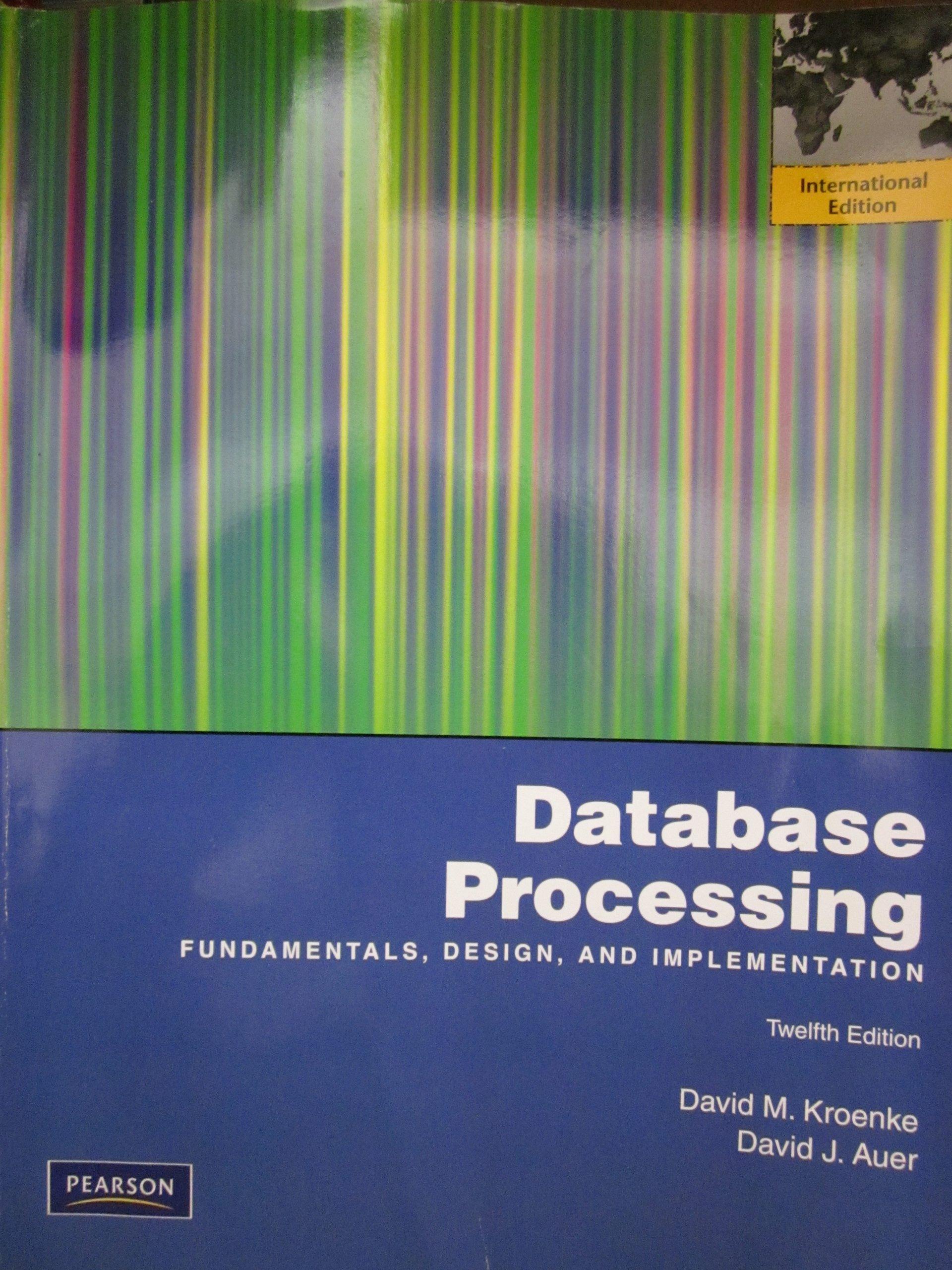Question
SQL Query Here are the tables: CREATE TABLE Movies( movieID INT, name VARCHAR(30) NOT NULL, year INT, rating CHAR(1), length INT, totalEarned NUMERIC(7,2), PRIMARY KEY(movieID),
SQL Query
Here are the tables:
CREATE TABLE Movies(
movieID INT,
name VARCHAR(30) NOT NULL,
year INT,
rating CHAR(1),
length INT,
totalEarned NUMERIC(7,2),
PRIMARY KEY(movieID),
UNIQUE(name, year)
);
CREATE TABLE Showings(
theaterID INT,
showingDate DATE,
startTime TIME,
movieID INT,
priceCode CHAR(1),
PRIMARY KEY(theaterID, showingDate, startTime),
FOREIGN KEY(theaterID) REFERENCES Theaters,
FOREIGN KEY(movieID) REFERENCES Movies
);
CREATE TABLE Tickets(
theaterID INT,
seatNum INT,
showingDate DATE,
startTime TIME,
customerID INT,
ticketPrice NUMERIC(4,2),
PRIMARY KEY(theaterID, seatNum, showingDate, startTime)
);
Although the Movies table has a totalEarned field, theres another way that we can calculate the total amount that a movie has earned. For each showing (in Showings) of that movie, there may be ticket tuples (in Tickets) for that movies movieID. Each Tickets tuple has a ticketPrice. So the computedEarnings of a movie can be calculated by adding up ticketPrice for all of the Tickets tuples that correspond to Showings of that movie.
Create a view called earningsView that has 2 attributes, movieID and computedEarnings This view should have a tuple for each movieID that gives the computedEarnings for that movietID.
What happens if theres a movieID for which there are no tickets? Well, there still should be a tuple for that movieID in earningsView, and that tuples computedEarnings should be 0
Step by Step Solution
There are 3 Steps involved in it
Step: 1

Get Instant Access to Expert-Tailored Solutions
See step-by-step solutions with expert insights and AI powered tools for academic success
Step: 2

Step: 3

Ace Your Homework with AI
Get the answers you need in no time with our AI-driven, step-by-step assistance
Get Started


